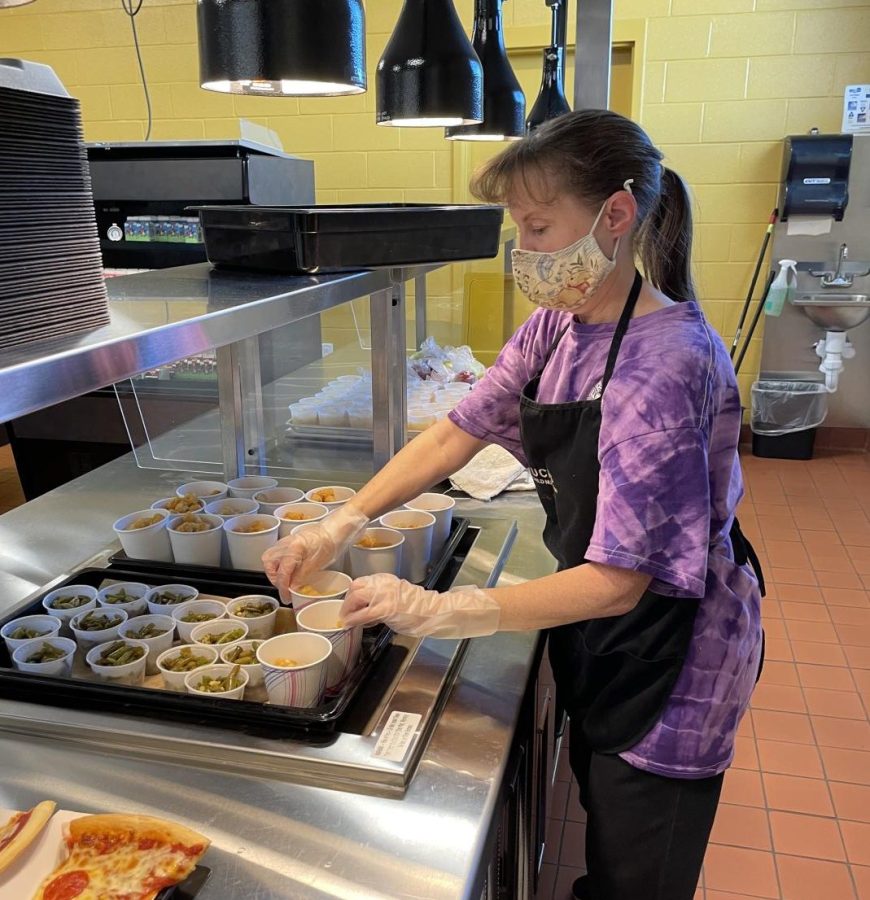Labor shortage affects UCPS employees
The staffing shortage has become a defining feature of this school year as UCPS sees the most job openings for the transportation, custodial, and nutrition department following the COVID-19 pandemic.
SV’s staff shortage is an example of a longtime problem heightened by COVID-19. While schools around the country have been granted more funding than usual due to federal relief dollars, they are finding it difficult to find people for positions in school services. The Bureau of Labor Statistics (BLS) reported 235,000 new jobs added to the economy last month and the unemployment rate decreased to 5.2 percent– but still, employees are in high demand.
“We are short three people while we usually have seven. Although we have been lacking before COVID as well, COVID made it worse,” custodian Amanda Redfern said.
A National School Transportation Association (NSTA) survey reports over 80 percent of school districts have altered service, and 51 percent describe their staffing issue as “severe” or “desperate.” This comes at a time when many low-wage industries are struggling to find and retain workers.
Despite raises, the bus department is still understaffed by 50 positions, leaving bus drivers with longer hours and double routes.
“I wake up at 4:30 AM each morning to cover double routes for elementary, middle, and high school and don’t finish until 7 PM,” anonymous UCPS bus driver Monica (*name withheld upon request) said.
The labor shortage not only affects the workers but students as well. With fewer available drivers, pressure is put on the bus drivers to get the students to school on time.
“Being constantly delayed and absent, kids get behind in school and we are responsible for that. It definitely adds to the stress being rushed each day,” Monica said.
In addition to the labor shortage in these departments, scarcity has also been seen among substitute teachers.“Teachers are having trouble finding substitutes and people to take their spots when they need to stay home or their children are sick,” senior Kadiatou Bah said.
Teachers who were required to leave for longer periods have left their students without teachers due to the shortage of substitutes.
The stress of teaching in the COVID-19 era has triggered a spike in retirements and resignations. According to Frontline Research & Learning Institute, 67% of survey respondents reported a substitute shortage this year. The Institute concluded that substitutes feel intimidated by the prospect of online and hybrid teaching or do not wish to risk catching COVID-19 from in-person classes.
“Not many adults would like to take that risk and teach at a school where they are exposed to many students,” Bah said.
Although vaccines are now widely available, some are still hesitant to return to work as the delta variant spreads. The continued presence of COVID-19 has deterred many returners from coming back to avoid being exposed.
“A lot of people left during the peak of the pandemic and never came back because they were worried about the exposure risk and health issues,” school nutrition manager Robin Guion said.
As the school year continues, the county has become more desperate to fill empty positions. UCPS has now attempted to increase pay as well as offer full-time benefits to employees.
“With the salary increases, it has been giving people the incentive to come back. The pay raise was major in our department when before, we couldn’t compete with other places up the road that were offering higher pay,” Guion said.
Although pay raises have helped draw people to fill in positions, a significant number of positions are still left open. To compensate for the labor shortage, employees within these departments are being challenged to work overtime and manage a larger workload.
“It’s been very stressful because sometimes in the custodian staff we may not even have one person for the entire school. It has really hurt and you worry because you don’t want the school to go lacking, but all you can do is stay longer to help out,” Redfern said.
While the data is still thin, the federal Bureau of Labor Statistics (BLS) has not seen increases in turnover in education jobs in recent months. Fixing the labor shortage issue comes with no silver bullet solution to recruiting and retaining such a large workforce; however, a set of policies tailored to address the need and circumstances of our staff can ensure every child is fed, taught, and cared for.



